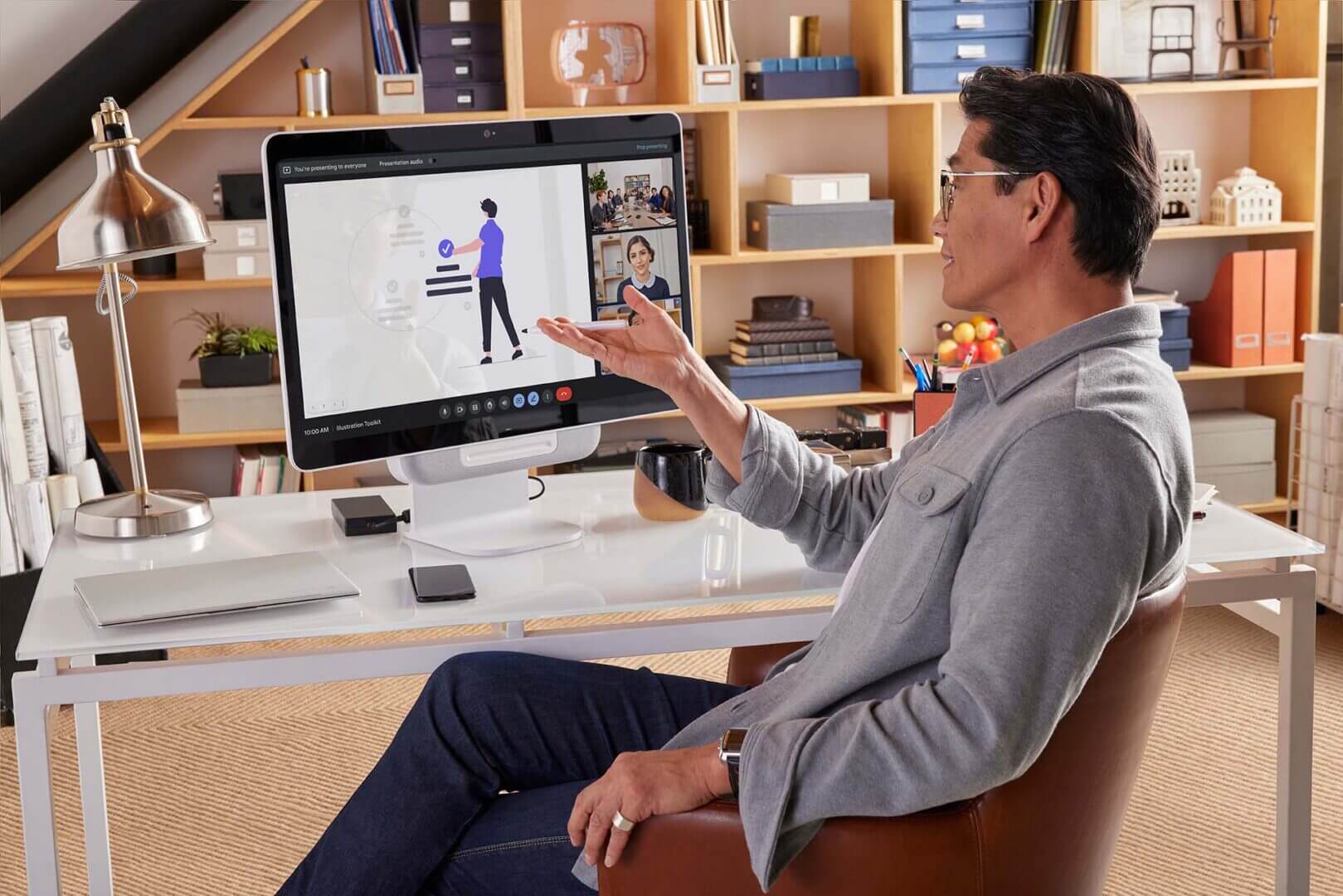
Hybrid meetings have become the norm for modern teams - but too often, they leave remote participants struggling to be heard. While adding a video call link is easy, creating equitable hybrid meetings takes much more. It’s about designing experiences where every participant - whether joining from a conference room or a home office - has an equal seat at the table.
At the heart of equitable meetings are three essential pillars:
When these pillars work together, hybrid meetings shift from fragmented experiences to truly connected ones - leading to better decisions, higher engagement, and more inclusive team dynamics.
Without intentional design, hybrid meetings often split into two separate conversations: one for those in the room, and a lesser one for those dialing in. Remote attendees miss side conversations, struggle with unclear visuals, and hesitate to join fast-paced discussions.
When equitable hybrid meetings are prioritized, teams unlock broader participation, stronger alignment, and a deeper sense of belonging. Inclusive meetings don’t just improve collaboration - they help teams retain top talent and foster resilience in today’s distributed workplace.
The right hybrid meeting technology lays the groundwork for equitable collaboration. Tools like Avocor’s interactive displays create shared digital spaces where teams can brainstorm, annotate, and co-create in real time - whether in the room or remote.
High-quality cameras and microphones ensure every voice is heard clearly, and meeting accessibility tools like real-time captioning and translation make meetings more inclusive for people of all abilities and languages.
Equally important is how these tools are used. Simple actions - such as screen-sharing whenever visual aids are used, or positioning cameras at eye level - give everyone the same context.
Technology also supports respectful virtual meeting etiquette. Thoughtful use of chat features, “raise hand” buttons, and scheduled pauses for remote input helps level the playing field. Muting when not speaking and minimizing side conversations in the room ensure clarity for everyone.
When used intentionally, technology creates a meeting space where participation feels effortless - no matter where someone joins from.
Technology creates the opportunity, but facilitation creates the experience. Inclusive meeting practices ensure that everyone has space to contribute meaningfully.
It starts with preparation - sharing agendas and materials ahead of time so participants come ready to engage. During the meeting, facilitators set the tone by acknowledging all participants and explaining how interaction will work. Pausing regularly to invite quieter voices, using structured turn-taking, and encouraging chat participation helps balance contributions.
Leaders can also assign a “remote buddy” to ensure that in-room discussions don’t overlook remote participants' input. Rotating the meeting facilitator role gives different voices the chance to lead, fostering shared ownership of the meeting culture.
Equity means closing the loop as well. Facilitators follow up with shared meeting notes and clear next steps, reinforcing accountability and making sure no one is left out of the outcome.
These inclusive meeting strategies aren’t complex, but they do require consistency and intentionality from leadership.
The meeting room itself plays a quiet but powerful role in creating equitable hybrid meetings. Poor camera placement, one-sided seating arrangements, or difficult-to-use technology can leave remote participants feeling like spectators.
Thoughtful design fixes this. Cameras and displays should be positioned so remote attendees are clearly visible and audible. Seating layouts - like U-shapes or semicircles - help ensure that in-room participants are facing the conversation, not turning away from it.
Interactive displays like Avocor’s turn the room into a shared workspace, where in-room and remote participants collaborate on the same digital canvas. Lighting, acoustics, and intuitive tech setup all contribute to a smoother, more inclusive experience.
Physical spaces should also feel inviting - natural light, comfortable seating, and adaptable layouts keep energy and focus high. A well-designed space doesn’t just accommodate remote attendees; it prioritizes them.
When technology, facilitation, and space work together, hybrid meetings shift from disconnected experiences to seamless collaboration. A product design session becomes a shared experience when remote team members co-create on an Avocor display, the facilitator pauses to invite every voice, and the meeting space makes remote participants feel present in the room.
Inclusive meetings don’t happen by accident - they’re designed with care and practiced over time. And when teams continuously ask, “How can we make our meetings more inclusive?”, they stay agile as work styles and team dynamics evolve.
Creating equitable hybrid meetings is an ongoing leadership practice. It’s not solved by technology alone - it’s a blend of the right tools, inclusive facilitation, and spaces designed for connection.
To recap the three pillars:
As your teams evolve, so too should your approach to hybrid meetings. By applying these pillars consistently - and refining them over time - you’ll create meetings where everyone feels seen, heard, and empowered to contribute.
Looking to equip your hybrid spaces for inclusive collaboration? Explore how Avocor’s interactive displays and unified collaboration solutions support dynamic, equitable hybrid meetings for modern teams.
Keep up to date with all the latest from Avocor and partners and get information on upcoming events and exciting product news.
Speak to one of our product specialists and find the perfect solution for you.